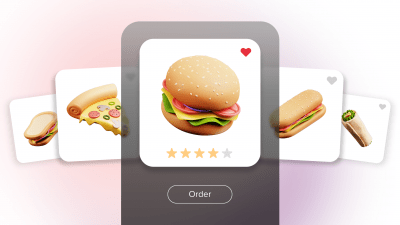Last Updated on: 10th May 2024, 09:47 am
AI-based techniques enable companies to present the right content, to the right audience and at the right moment. It is crucial for the success of any brand and allows you to optimize your marketing budget allocation. In order to use your resources wisely, you have to monitor your branding campaigns’ performance, and that is where metrics such as VCR or CPCV may prove useful.
In this article, you will learn about:
- Video completion rate (VCR) formula and Cost Per Completed View (CPCV)
- Why these metrics are important during video ad effectiveness assessment
- How to improve your VCR and CPCV
- Which techniques are worth leveraging when it comes to increasing a brand’s visibility
Table of Contents:
- Ensuring a high video completion rate
- What is CPCV (Cost Per Completed View) advertising?
- Why is CPVC so important for business?
- What is brand visibility?
- How to make your brand more visible – ideas and challenges
- To sum up
Ensuring a high video completion rate
The video completion rate formula is calculated as the number of completed views of an ad (from the beginning to the very end) divided by the number of all attempts to view the ad. VCR is expressed as a percentage of total views. Your ad VCR (video completion rate) formula answers the question: what percentage of the audience watched your video from the beginning to the very end. The companies’ goal while streaming video ads is obviously to have the highest possible completion rate. The reason for that is simple, you have to be seen, to send your message to the audience and in order to get this message, users have to see most of your video. Now, people tend to skip long videos, so you only have several seconds to present the key values of your organization or the offer. Around 59.9% of the respondents of the 2021 Video Benchmark Report claimed that an excessive length of the video prevents them from watching it. Most of the video ads on the web (60%) are less than 2 minutes long. According to the research website, video ads should be around 30-60 seconds long. Still, the good practice is to keep it short and concise – with a strong message presented in an understandable way. Optimal lengths of the video materials also differ due to their functions – explainer videos can be up to 90 seconds long and demo videos can last for even 5 minutes. Promo videos shouldn’t be longer than a minute.
Apart from enhancing your video, you also have to optimize budget usage. A right approach and strategy is crucial to create a high quality ad that will catch the eye of your potential customer and provide them with enough information about your brand or product. Also, you don’t want to waste your budget on presenting high quality video ads to the wrong users. Artificial Intelligence-based techniques allow us to optimize the video campaign’s effectiveness, by better targeting and video content personalization.
Once you start with advanced video ads promotions solutions, you should continue to monitor your ads’ performance and draw conclusions that will help you improve your campaigns’ efficiency even more. There are some useful metrics that you can leverage to assess your ads viewability. Applying certain efficient techniques will allow you to overcome challenges in current branding campaigns and to make sure that your video content reaches your potential customers.
What Is CPCV (Cost Per Completed View) advertising?
In general, CPCV is a metric for an advertising campaign’s efficiency assessment, but it is also an advertising pricing model – in that sense, CPCV advertising means that companies pay each time a video has been viewed through to completion. In many cases, it may be a better way to invest the marketing budget. A CPCV model assures that you’re paying for high-quality users who have full visibility of your ad. But let’s focus on CPCV as a video effectiveness metric.
The CPCV formula is advertising cost / completed video view. This metric actually allows you to calculate how much you have to pay for presenting the entire video to a user. Information of this type can be used later to optimize your video campaigns towards the completed views rather than clicks and impressions (those two don’t really tell you, if you succeed in reaching a potential customer with your message).
Why is CPCV so important for business?
VCR and CPCV are both great metrics for assessing your video ads’ efficiency. Are you wondering whether you are using the right metrics, tools, advertising models or if your videos are good enough to help you go ahead of your competition? Our experts will advise you, which ones you should choose for checking the results of your campaign.
First, you need to know that if you decide to use CPCV as your ad efficiency metric, you will automatically put VCR at 100%. As a result, you don’t have to worry about it further, and you can focus on reaching the expected CPCV value. By checking your video completion rate or cost per completed views, you learn:
- what part of your audience actually view your video from the beginning to the end
- if users are interested in your video content or if you have to work on improving your ads targeting
- how many of the users you reach engage with your content (a low VCR can be caused by the poor quality of the video)
- how much you spend on actual video views
So, why is such feedback helpful for a company that invests in video advertising? First, this way, you reduce expenses that could potentially go to waste. Of course, in order to get your metrics right, you need to leverage some special tools to learn what the weaknesses of your advertising are. Do you have to cut your videos shorter? Or maybe improve their quality? Or perhaps your ads are already exquisite, but your targeting requires optimization? High ad viewability gives us access to a good deal of information, which allows us to identify potential weak spots of your ads more easily.
What is brand visibility?
Brand visibility is the rate at how widely your brand is seen by your audience. This rate does not only involve the effects of your video campaigns, but also the results of your activity in any other marketing communication channel. The main goal of any marketing strategy is to attract the right group of potential customers and create a relationship with them. Assessing your ads’ viewability, and learning how your audience interacts with your marketing content enables you to plan how to increase your brand visibility.
There are many methods for increasing your brand’s visibility. Before you will actually start modifying your strategy and ads, you should leverage CPCV and other ads’ efficiency metrics in order to learn what needs to be changed.
How to make your brand more visible – ideas and challenges
The video completion rate (VCR) tells you what percentage of the audience watched your video ads from the beginning to the end. If it is low, you can assume that your users are not interested in particular content or that the ad is not good enough to engage them for a longer time. A high CPCV may be a bad thing, but not necessarily – it means you are spending a lot to get your video presented to the right users. Low CPCV means that the performance of your video ad is high. Still, sometimes brands rather choose to pay more for view in order to have their ads displayed on specific websites, which are better related to their industry or more popular among their targeted group.
Remember, that while trying to achieve the best results of your video campaigns, you should always put user experience first. For example, you can publish your video and make it non-skippable, but this way you risk that an audience could be annoyed with your content. Such a solution is not always the best choice – you don’t want users to become irritated or leave the page or application every time they see your ads, right? Being associated with obtrusive advertising is certainly not what your brand needs.
In order to reduce your CPCV, you may try targeting a wider audience. Before you modify your targeting settings, improve the ad – the video should be short enough and of high quality, otherwise your audience will not be interested in it. A wise idea would certainly be rotating videos during the particular campaign, so users wouldn’t be provided with the same content over and over again. Another good solution is capping – we can ensure that during one campaign, a user will see a certain video no more than 3 times.
See also: What are the Differences Between Brand Visibility and Brand Awareness?
To sum up
The proper interpretation of multiple video ads’ effectiveness metrics is not easy at all. In fact, making the right decisions on your video campaign optimization based on advanced marketing analysis requires good intuition, huge experience and professional knowledge of martech solutions available for companies. The video advertising sector is growing very fast, and it is not easy to keep up with all the new tools and methods introduced to the market if you don’t specialize strictly in marketing technologies. Fortunately, you can always leave ads optimization to the experts.
Reach for the most advanced video campaigns optimization techniques. We will be happy to assist you with your advertising and improve your brand visibility using deep learning and contextual targeting.





